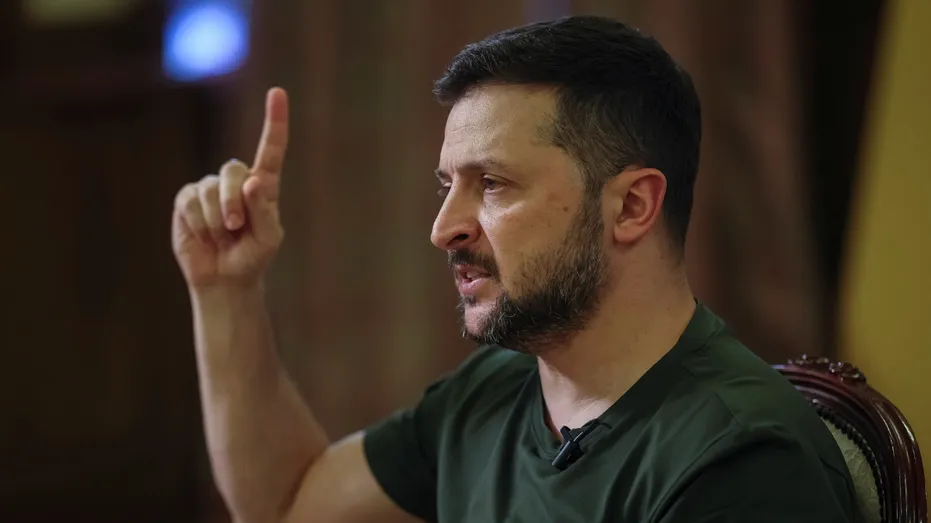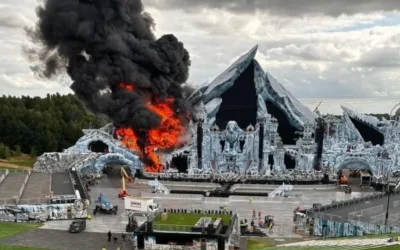Zelenskyy Initiates Major Government Reshuffle Amid Ongoing Conflict
In a dramatic turn of events that could reshape the political dynamics in Ukraine, President Volodymyr Zelenskyy announced a sweeping government overhaul following the resignation of Prime Minister Denys Shmyhal. This move appears to be part of a broader strategy aimed at bolstering Ukraine’s defense capabilities amidst its ongoing conflict with Russia, as well as revamping a government that has faced numerous challenges since the war escalated.
Key Developments in the Reshuffle
The resignation of Prime Minister Shmyhal is seen as a domino effect of recent tensions within Ukraine’s leadership and a reaction to mounting pressures from both the Ukrainian public and Western allies. President Zelenskyy stated in a televised address that this significant reshuffle is necessary to introduce fresh perspectives and stronger leadership as the country continues to navigate the complexities of war.
In a remarkable show of political agility, Zelenskyy declared he has a clear vision and a plan to implement major changes within the highest echelons of government. This initiative comes at a critical juncture when the government must strengthen its decision-making capacity to handle the evolving geopolitical landscape.
Why Now?
As hostilities with Russia continue to threaten Ukraine’s sovereignty, the urgency to streamline governance has never been more pressing. The challenges that Shmyhal faced included accountability for government spending, efficient use of international military aid, and addressing widespread corruption—all of which have been exacerbated by the war.
Furthermore, recent polls show a decline in public approval for government actions, creating an impetus for Zelenskyy to act swiftly before further dissent takes hold. Indeed, reshuffling the cabinet seems to resonate well with citizens who express a desire for change and for leaders who are more in tune with the realities on the ground.
The Role of U.S. Support
Compounding the urgency of this reshuffle is the significant military and financial support that Ukraine is poised to receive from the United States and other allies. The Biden administration has committed to sending additional arms, ammunition, and humanitarian assistance, pledging a total of nearly $18 billion in military aid over the next several months.
Newly appointed officials are expected to prioritize military reform and ensure that U.S. support is channeled effectively, thereby enhancing military readiness and resource allocation. The hope is that such a government overhaul will cultivate a more cooperative and productive relationship with international allies, particularly in ensuring that aid is utilized effectively in the fight against Russian aggression.
Challenges Ahead
Despite the forward-looking optimism that accompanies this reshuffle, there are innumerable challenges that await the newly appointed officials. The looming presence of a formidable Russian military, economic instability, and managing the expectations of both the populace and international community will dominate the agenda for whoever takes on these roles.
One of the primary concerns remains how to address the myriad corruption issues that have plagued Ukraine’s political arena for years. The outgoing Prime Minister has made initiatives to combat corruption but has been met with considerable resistance from entrenched interests. Zelenskyy has emphasized that the new government must tackle these problems head-on to restore faith in public institutions.
Public Reaction
Public reception of the recent announcements has been mixed. Many citizens are hopeful for a government that can rise to the occasion and effectively deal with the expansive challenges ahead. However, there are also pockets of skepticism prevailing in parts of the electorate who question whether this reshuffle is more symbolic than substantive.
Some analysts argue that without pragmatic solutions and a clear plan, mere personnel changes will not suffice in resolving the deeper issues that Ukraine faces. Public protests in the coming days may serve as a barometer for how citizens are processing these changes. Keeping the populace informed and involved will be crucial in assuaging doubts.
International Implications
As Ukraine moves forward with these major changes, how this government evolves could have significant ramifications for international relations. Other countries observing Ukraine’s transformation will be analyzing its effectiveness in combating corruption and managing U.S. military aid.
President Zelenskyy’s ability to foster collaboration with the U.S., NATO allies, and remaining Western partners will be crucial in sustaining the pushback against Russian advances. The stakes are incredibly high; failure to solidify trust could mean detrimental effects not only for national security but for Ukraine’s aspirations of closer integration with Western powers.
Conclusion
Ukraine stands at a pivotal inflection point as President Zelenskyy takes decisive steps to revamp his government. The departure of Prime Minister Shmyhal offers an opportunity for fresh leadership to emerge. However, whether this reshuffling will translate into effective governance amid war, economic strife, and corruption remains uncertain. With critical military support on its way from the U.S. and a citizenry eager for change, the path ahead is fraught with both challenges and possibilities.
What is certain, however, is that the world will be closely watching as Ukraine attempts to reinvent itself politically while navigating the treacherous waters of conflict. The success of this initiative could redefine Ukraine’s trajectory in the face of war, building the foundation for a more stable and prosperous future.







